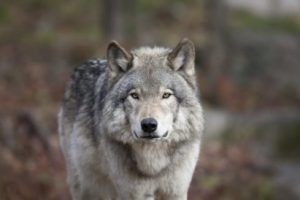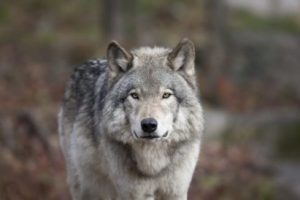
WASILLA — The gray wolf (Canis lupus) of Alaska runs with a bigger pack than its brethren in the lower 48. That’s because it’s got a tougher prey to tangle with, namely, the Alaska moose, an animal that can grow up to nearly 7 feet tall at the shoulder and weigh up to nearly one and a half tons.
Shannon Barber-Meyer, a U.S. Geological Survey wildlife biologist who specializes in research on American gray wolves and white-tailed deer, led a recent study published in the journal Behavior, an animal behavior peer-reviewed publication.
Barber-Meyer’s team studied pack size and hunting behaviors of gray wolves in Denali National Park and compared them to those in Yellowstone National Park and areas around the Yukon in Canada.
The researchers found that Alaska gray wolves go for their big-game targets in hunting packs of around 10, compared to gray wolves hunting in the Yellowstone, which typically number around three. The gray wolves of Yellowstone primarily hunt white-tailed deer.
Anthropologists from the Universities of Arizona and Washington have found evidence for a Paleolithic workshop at Swan Point in Alaska, shedding some light on how ancient Alaskans living on Beringia worked and lived. Beringia, the land bridge now submerged underwater by which ancient peoples populated Alaska and the Americas, is of great interest to anthropologists trying to understand more about the Paleolithic history of the northern and southern American continents.
Materials from the workshop date to around 14,000 years ago, and belongs to what anthropologists call the Dyuktai culture.
Researchers think the “specialized workshop” was used for making and fixing tools made from various organic materials in the vicinity, including naturally-occurring sites with high numbers of mammoth bones. Most mammoth species went extinct by around 10,000 years ago, but a smaller species of mammoth, called dwarf mammoths, persisted longer in Alaska, with the last of them disappearing from Wrangel Island on the Russian side of the Chukchi sea, fewer than 4,000 years ago.
The results of research into the Dyuktai workshop site in Alaska were published in the journal American Antiquity.
Source: Alaska’s gray wolves stand out from the pack | Outdoors | frontiersman.com
